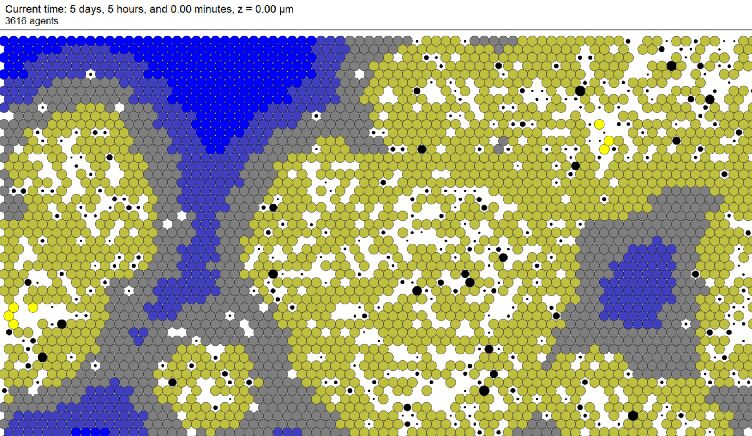A mathematical modeling software initially created to analyze breast cancer cells is now helping investigators understand SARS-CoV-2
In 2018, Dr. Paul Macklin led a team of scientists and mathematicians to develop PhysiCell, a “virtual laboratory” that provides a robust, scalable computer model to simulate systems of cells, like tumors. Initially conceived to model breast cancers, PhysiCell was funded, in part, by BCRF in partnership with the Jayne Koskinas Ted Giovanis Foundation for Health Policy.
Dr. Macklin built PhysiCell with several core concepts in mind. One was to make sure the platform was scalable and efficient. PhysiCell has the ability to model not just one or two cells, but up to 500,000—and can be run on most home computers. Processes that could take months or years in a lab, such as conducting drug screening assays on thousands of cells, can be done quickly—and all at once—in PhysiCell. Dr. Macklin also wanted to make sure the software was open source, allowing anyone to download the code, make adjustments, and customize it for different purposes. The hope was that this model could be broadened to simulate more cancers (and, in fact, it has since been used to model colorectal cancer metabolism) and other cellular processes.
RELATED: ‘Virtual Laboratory’ Provides New Tool for Studying Tumor Biology
Fast forward to 2020, as the COVID-19 pandemic was starting to spread across the country, Dr. Macklin quickly adapted PhysiCell to model SARS-CoV-2 infections in the lungs and other tissues to better understand the disease. Because of the careful planning that went into PhysiCell during development, Dr. Macklin was able to go from 0 lines of code to a working prototype in just 12 hours.
Since sharing the prototype internationally, the research community has been conducting swift refinements to the PhysiCell SARS-CoV-2 model. “In a sustained community effort, this consortium is integrating data and expertise across virology, immunology, mathematical biology, quantitative systems physiology, cloud and high-performance computing, and other domains to accelerate our response to this critical threat to international health,” researchers wrote in a preprint about the rapid-response model.
RELATED: Dr. Macklin Speaks on the BCRF Podcast
A SARS-CoV-2 vaccine is months, or even years, away, so Dr. Macklin hopes this model could help identify potential drugs to treat COVID-19 in patients. What researchers learn about how SARS-CoV-2 infects cells and progresses now might help us prepare for other viruses, infectious diseases, and future pandemics. Researchers might also be able to apply their findings to immunotherapy for cancer or other immune disorders.
“PhysiCell’s funders made this rapid prototyping possible,” Dr. Macklin said. “Basic science in times of calm pays off in times of need.”






